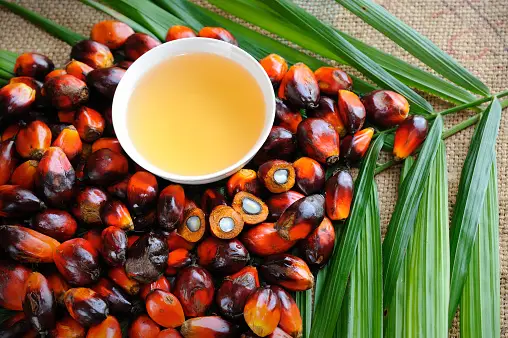Whitlow is a type of viral finger infection usually caused by the herpes Simplex Virus (HSV) that causes cold sores. It can also be referred to as herpetic whitlow. This virus is contagious and can be spread through direct contact with the skin, saliva or body fluids of an infected person.
In toddlers, whitlow usually appears as a blister on the finger or thumb. It is often characterized by a fever, swollen lymph nodes, and blisters or sores on the affected finger or thumb. These blisters may be red, itchy, swollen, and painful. It is most commonly spread among children who suck their thumbs.
Causes of whitlow in toddlers
Herpetic whitlow in toddlers is typically caused by exposure to the herpes simplex virus. Toddlers may be exposed to the virus through contact with an infected adult or child or with contaminated objects. The virus usually penetrates your skin if you have a cut.
While herpes simplex virus is the most common cause of herpetic whitlow in toddlers, poor hygiene can be another causative factor. If toddlers do not wash their hands frequently or properly, they may be more likely to get the herpes simplex virus from contaminated surfaces.
Why is whitlow common amongst toddlers?
Herpetic whitlow is more common in toddlers than in older children or adults because toddlers are more likely to come into contact with the virus. They explore their surroundings by touching surfaces and objects that may already be contaminated and putting their hands and fingers in their mouths.
Their weaker immune system is another factor that makes them more susceptible to the infection than older children or adults. Again, toddlers are also more likely to have open cuts or scrapes on their fingers, which may result from having their fingernails trimmed too short or home injuries. These cuts or scrapes can serve as an entry point for the virus.
Safe home remedies to treat whitlow in toddlers
While medical treatment is often necessary, some safe and effective home remedies can help to alleviate symptoms of whitlow in your toddler. They include:
- Soaking the affected area in a warm bath with baking soda or a cold compress. This can help to reduce inflammation and pain.
- Apply a paste made from honey and turmeric to the affected area. This paste has antibacterial and anti-inflammatory properties that can help speed healing.
- Applying aloe vera gel to the affected area. Aloe vera contains natural healing properties that can help to soothe the skin and promote healing. It also helps to reduce inflammation and swelling.
- Oatmeals or chamomile baths. Oatmeal has anti-inflammatory properties, while chamomile has calming and healing properties.
In addition to the above, endeavour to always dress and keep the affected finger clean and covered, and provide painkillers to help ease the pain. Try to discourage children with a whitlow from sucking their thumbs. Please note that it is important to seek medical treatment if symptoms persist after a few days.
Medically recommended treatment for whitlow in toddlers
Herpetic whitlow naturally resolves independently but may require an antiviral prescription to hasten the cure. A paediatrician may recommend antiviral medications, such as mupirocin, valacyclovir or acyclovir, to help treat and fight the herpes virus.
In most cases, whitlow in toddlers is treated with antibiotics if the infection is severe. The paediatrician may likely prescribe a treatment plan that includes antibiotics. This can be oral or a topical antibiotic ointment such as amoxicillin or cephalexin, or may also be required to take intravenous antibiotics. Antibiotics are usually taken for 7-10 days to clear the infection.
These medications help to speed up healing and reduce the risk of complications. You may be required to cover your toddler’s finger with a bandage afterward, which helps avoid spreading the infection. The finger gets better after a few weeks. The whitlow may return to the same area of the finger if not properly treated and handled.
How to prevent whitlow in toddlers
There are several steps that parents can take to help prevent their toddler from developing herpetic whitlow:
- Encouraging good hand hygiene habits involves regularly washing hands with soap and water.
- Avoid constant touching of their eyes, nose, and mouth.
- Avoid body contact with others who have active skin infections, such as impetigo or ringworm.
- Keeping the child's fingernails trimmed neatly to militate the spread of the virus.
- Eating healthy to boost the antibodies.
Herpetic whitlow is a common infection in toddlers. Whitlow, if left untreated, may lead to serious other complications such as blood infections, cellulitis and osteomyelitis. If your toddler has whitlow, it is important to seek medical treatment immediately.
Several safe home remedies can serve as a relief, as mentioned above. However, trying home remedies like hot balms or vinegar may worsen the infection, so it is best to avoid them. Follow your paediatrician's instructions carefully to ensure a full recovery, especially if the symptoms are severe. In case you have any questions about whitlow or your child's treatment, be sure to speak with a pediatrician.
Frequently Asked Questions (FAQs)
Why does my toddler have a whitlow?
It is possible that your child may have come into contact with someone who has the herpes simplex virus, or they may have touched something contaminated with the virus.
Can I use a hot balm to extract the pus from my toddler’s whitlow?
Using a hot balm to extract pus from your toddler’s whitlow is not advised. This can worsen the infection by causing irritation or further damage to the skin and tissue.
Can I use vinegar to treat whitlow in my toddler?
Although sometimes used as a home remedy to treat whitlow in adults, it is not recommended for toddlers. Vinegar is acidic, which can irritate the skin and make the infection worse. Speak with a paediatrician for safe and effective natural options.










Comments